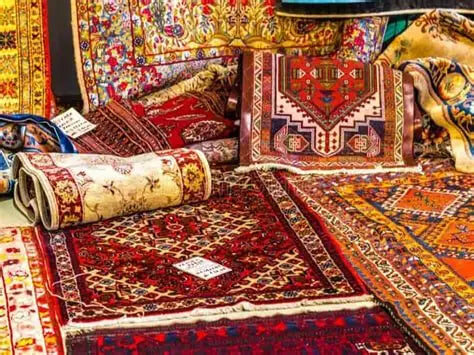Weaving Iran’s sustainable growth through handicrafts

TEHRAN--Iran’s handicrafts sector, deeply rooted in millennia of cultural heritage, remains a vital yet often overlooked part of the country’s economy.
While the nation’s vast oil reserves have long dominated headlines and national priorities, the artisanal crafts industry quietly sustains millions, drawing on a rich tradition that spans more than 150 distinct crafts, Presstv wrote.
From Persian carpets renowned worldwide to the intricate enamelwork, turquoise inlays, delicate woodwork, and varied textile arts, this sector offers more than aesthetic value. It presents a crucial opportunity for economic resilience, social inclusion, and sustainable development.
Despite the weight of decades marked by economic sanctions and geopolitical tension, Iran’s handicrafts industry endures as a bedrock of local economic activity.
Its labor-intensive and decentralized nature makes it an important source of employment, particularly in rural and semi-urban areas where industrialization remains limited.
Approximately 70 percent of artisans in this sector are women, highlighting the role the industry plays in fostering female economic empowerment.
Economically, the sector’s appeal lies in its low capital requirements and heavy reliance on indigenous raw materials.
Unlike capital-intensive industries dependent on imported machinery and foreign inputs, Iranian handicrafts often use local agricultural products, minerals, and natural fibers widely available throughout the country.
This insulates the sector from supply chain disruptions and currency fluctuations, challenges that have dogged Iran’s broader economy in recent years.
The ability to source materials domestically while relying on labor-intensive production means that much of the value created remains within local economies, fostering income circulation and encouraging small-scale entrepreneurship.
Iran’s handicrafts sector also holds considerable export potential. While oil has historically been the country’s main source of foreign currency, handicrafts offer an alternative stream of earnings, especially important under the weight of illegal sanctions.
Persian carpets remain coveted across Europe, North America, and parts of Asia for their craftsmanship and artistic detail. Similarly, enamelwork from Isfahan, turquoise jewelry from Neyshabur, and intricate wood and metalwork from regions such as Tabriz and Kerman command niche markets abroad.
However, despite these advantages, the industry remains fragmented and informal, limiting its capacity to scale and compete globally.
The rise of e-commerce presents a significant opportunity to address some of these challenges. By leveraging online marketplaces, Iranian artisans can connect directly with international buyers, bypassing intermediaries, improving profit margins, and increasing visibility.
Digital platforms could be transformative, enabling artisans to preserve traditional craftsmanship while embracing modern business practices.
This trend dovetails with global consumer shifts toward sustainability and authenticity. Worldwide demand for products that are environmentally friendly and culturally meaningful is growing, and Iran’s handicrafts align well with this trend.
By blending modern techniques with traditional craftsmanship, these startups are reshaping the production and marketing of Iranian heritage goods, ensuring they meet rising demand for genuine, eco-friendly goods while preserving Iran’s rich cultural identity.
The use of eco-friendly techniques and natural materials, coupled with deep cultural symbolism, gives Iranian crafts a competitive edge in niche markets.
Moreover, the promotion of cultural tourism can generate supplementary income streams, supporting local economies while preserving intangible cultural heritage.
From a policy perspective, there is a strategic opportunity for Iran to integrate handicrafts into broader economic diversification plans. Reducing dependency on oil revenues is a pressing national priority amid sanctions and volatile energy markets.
Beyond economics, Iranian handicrafts carry immense cultural significance. They embody centuries of accumulated knowledge, skill, and creativity across the country’s many ethnic groups and regions.
From Kurdish rugs to Baluchi embroidery, Qashqai weaving to Gilani pottery, these crafts foster social cohesion, cultural pride, and regional development.
The creative nature of handicrafts places them at the heart of what economists describe as the creative economy, which relies on intellectual and cultural capital rather than physical resources.
This provides the sector with a structural advantage, especially in a global environment where innovation and cultural capital are key drivers of growth.
Ultimately, Iran’s handicrafts sector is far more than a relic of the past. It is a dynamic industry with deep cultural roots and significant untapped economic potential.
Looking ahead, the future of Iran’s handicrafts sector shines with promise and possibility.
By modernizing production methods, expanding export capabilities, and harnessing digital technologies, Iran can transform its ancient artisanal traditions into a powerful engine of growth and social progress.
KD
Leave a Comment